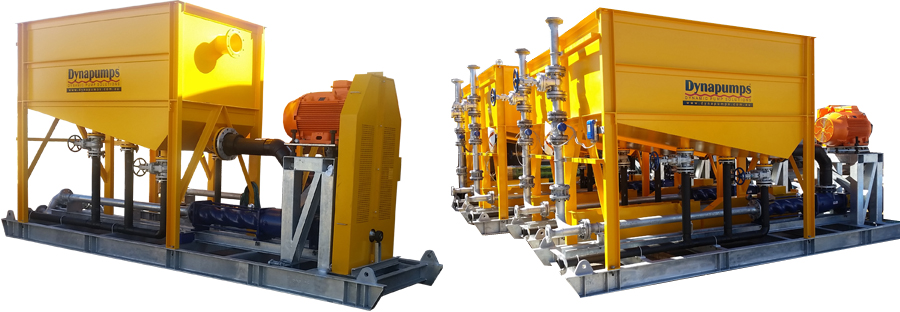C 130 Progressive Maintenance Program

C-130 Corrosion & Maintenance Costs for FY 2010. LMI Cost of Corrosion for US Air Force C-130 Aircraft, Dec 2010. C-130 Corrosion and Maintenance Costs by Aircraft Type (F Y2010) Corrosion as a percentage MDS Invento ry I Corrosion cost Maintenance cost I of m a intenan ce C 130H268 I $ 243,483,946.
Dan Rhoades, director of strategy for the 21st Century Partnership, agreed that the announcement is a vote of confidence in the work being done at the base.' It's a direct result of the fantastic work the folks at the depot have been doing over the last several years to handle the C-130 work,' Rhoades said. 'It certainly bodes well for the depot going into the future.
This is a fantastic opportunity.' In Ogden, Utah, currently does the C-130 programmed depot maintenance work for the Navy.A base release said the move makes Robins the primary location of depot maintenance of C-130s throughout the military.' This is a great opportunity for our professional workforce, and we welcome this opportunity to provide first-class sustainment of the fleet,' Kubinec said in a release.The C-130 Hercules, still being built at the Lockheed-Martin plant in Marietta, is known as a workhorse that is capable of a wide variety of missions. The Navy uses it for transport of troops and cargo, as well as aerial refueling and close air support. The four-engine, propeller driven plane can also be used for firefighting, weather reconnaissance, medical evacuation and search and rescue.Robins has been the life-cycle caretaker of C-130s since the first production aircraft flew in 1956. Lockheed-Martin says it has been continuously produced longer than any other military aircraft.This article is written by Wayne Crenshaw from and was legally licensed via the Tribune Content Agency through the publisher network.
Please direct all licensing questions to legal@newscred.com.
What's This 'A' Check, 'C' Check Stuff?
Aircraft inspections defined
By Jack Hessburg
April 2000
When I start hackmii, it says 'install homebrew channel' and 'uninstall homebrew channel'. I have 1.1.2 and have the hackmii installer for 1.1.2. I want to reinstall my homebrew channel. How to install wiixplorer wad.
Jack Hessburg has over 40 years experience in aircraft maintenance. He is recently retired from The Boeing Co. where he served as Chief Mechanic. Hessburg holds an A&P certificate and a degree in Mechanical Engineering.Last month, I discussed the derivation of Maintenance Review Board (MRB) tasks. Let's now examine how they are grouped into efficient work packages.
Packages are constructed by dividing the maintenance tasks into convenient, bite-size chunks to minimize the time the airplane is out of service, to keep the maintenance workload level, and to maximize the use of maintenance facilities.
Scheduled maintenance tasks are grouped into work packages known as blocks. The complete package is sometimes referred to as a complete overhaul cycle. The concept is called block maintenance or sometimes progressive maintenance.
The following groupings typically illustrate the concept, and Figure 1 shows how they all interact.
Daily check
This check travels under several common names and post-flight, maintenance pre-flight, service check, and overnight to name a few. It is the lowest scheduled check. Walk around inspection by flight crew is not normally a part of a maintenance program. A daily check is a cursory inspection of the aircraft to look for obvious damage and deterioration. It checks for 'general condition and security' and reviews the aircraft log for discrepancies and corrective action. The accomplishment of the daily check requires little in the way of specific equipment, tools, or facilities.
A basic requirement is that the airplane remains airworthy. Usually, a daily check is accomplished every 24 to 60 hours of accumulated flight time. Examples of daily check items include:
• Visually inspect ta il skid shock strut pop-up indicator
• Check fluid levels
• Check general security and cleanliness of the flight deck
• Check that emergency equipment is installed
'A' check
This is the next higher level of scheduled maintenance. It is normally accomplished at a designated maintenance station in the route structure and includes the opening of access panels to check and service certain items. Some limited special tooling, servicing, and test equipment is required. The 'A' check includes the lower check, i.e. Daily check.
Examples of 'A' check items include:
• General external visual inspection of aircraft structure for evidence of damage, deformation, corrosion, missing parts
• Check crew oxygen system pressure
• Operationally check emergency lights
• Lubricate nose gear retract actuator
• Check parking brake accumulator pressure
• Perform Built-in Test Equipment (BITE) test of Flap/Slat Electronics Unit
'B' check
This is a slightly more detailed check of components and systems. Special equipment and tests may be required. It does not involve, however, detailed disassembly or removal of components.
Contemporary maintenance programs do not use the 'B' check interval. For a number of reasons, the tasks formerly defined for this interval have, for many airplanes, been distributed between the 'A' and 'C' check.
Heavy checks
The following two checks are traditionally known as heavy checks. They are normally accomplished at the main maintenance base of the airline where specialized manpower, materials, tooling, and hangar facilities are available.
'C' check: This is an extensive check of individual systems and components for serviceability and function. It requires a thorough visual inspection of specified areas, components and systems as well as operational or functional checks. It is a high-level check that involves extensive tooling, test equipment, and special skill levels. 'C' checks remove the airplane from the revenue schedule for 3 to 5 days. The 'C' check includes the lower checks, i.e. 'A,' 'B,' and Daily checks.
Examples of 'C' check items:
• Visually check flight compartment escape ropes for condition and security
• Check operation of DC bus tie control unit
• Visually check the condition of entry door seals
• Operationally check flap asymmetry system
• Pressure decay check APU fuel line shroud
• Inspect engine inlet TAI ducting for cracks
• Operationally check RAT deployment and system 'D' check: This can also be referred to as the Structural check. It includes detailed visual and other non-destructive test inspections of the aircraft structure. It is an intense inspection of the structure for evidence of corrosion, structural deformation, cracking, and other signs of deterioration or distress and involves extensive disassembly to gain access for inspection. Special equipment and techniques are used. Structural checks are man-hour and calendar-time intensive. The 'D' check includes the lower checks, i.e. 'A,' 'B,' 'C,' and Daily checks. This check removes the airplane from service for 20 or more days. Examples of 'D' check items include:
• Inspect stabilizer attach bolts
• Inspect floor beams
• Detailed inspection of wing box structure
Variations
There are variations of block maintenance. One of those variations is called a phase check — don't be confused by the variety of names. The number of scheduled maintenance tasks for a large airplane like the 747 are extensive, and this is particularly true for the higher 'C' and 'D' checks. Their accomplishment can remove the airplane from service for several weeks. This is considered unacceptable as it defeats the concept of removing the airplane from service in small, manageable blocks. One solution is to divide these higher checks into segmented blocks or phases.
A typical phase check provides for a thorough visual inspection of specified areas, components, and systems as well as operational or functional checks of specified components and systems. Each check includes the requirements of traditional lower check work items and portions of 'C' and 'D' checks at the required task intervals.
Phase checks are typically accomplished at 200 to 800 flight-hour intervals, depending upon the work packaging plan and other airline operating variables.
Block maintenance is further modified when examining the special requirements of high-time/high-cycle airplanes. Older airplanes have increased maintenance tasks defined. This includes supplemental structural inspections, corrosion control programs, and aging system checks.
Executive and VIP airplanes have low utilization and represent another variation of block concepts. Task, intervals and blocks defined by the MRB are based upon the higher utilization levels of air carrier operations. They don't work for VIP airplanes. Consequently, separate packages are developed for VIP airplanes that are predominantly based upon calendar time.
Contemporary practice removes the packaging of maintenance tasks from the MRB process. When a MSG analysis is conducted only the tasks and intervals are identified. The packaging into manageable blocks is left to the operator of the airplane.
Check packages
The final item is to prepare a check package that bundles mandatory and discretionary maintenance tasks.
Mandatory tasks include:
• The scheduled check (example and 'C' check)
• AD Note accomplishment
• Certification Maintenance Requirement (CMR) inspections
• Clearance of deferred maintenance (MEL) items
• Hard time changes including such items as time/cycle-controlled or life-limited parts
• Ad Hoc maintenance such as corrosion control, structural repair, system repairs, component removal and replacement
• Special operator or manufacturer initiated inspections
Discretionary tasks include:
• Service Bulletin accomplishment to improve departure reliability
• Installing passenger acceptance, appearance, and convenience items or cost reduction items
• Sampling inspections to gather data for check escalations etc.
• Component replacement for convenience
• Replacement of Configuration Deviation List (CDL) items
Return to service The completed check package is gathered together and all the task cards, reference materials, and parts are shipped out to the hangar. The mechanics do their checks and repairs, and the airplane is returned to service.

Packaging is detailed, and there are many variations of the concept. Understanding is further complicated by the fact that packaging concepts have evolved over the past 50 years. Once an airplane uses a given packaging scheme, it is rarely changed to a more advanced technique.
Remember that blocks have numerous other names within the maintenance community, so don't let this confuse you. The exact nomenclature, composition, and number of blocks vary between operators. Thus, the maintenance packaging program for an A-340 or 777 is different from that followed by a 727/DC-8 generation airplane.
That's all there is to this 'A' check, 'C' check stuff. Regardless of the means in which the tasks, blocks, progressives, or phases are packaged, all of the required tasks defined by the MRB will be accomplished when all of the items have been completed.